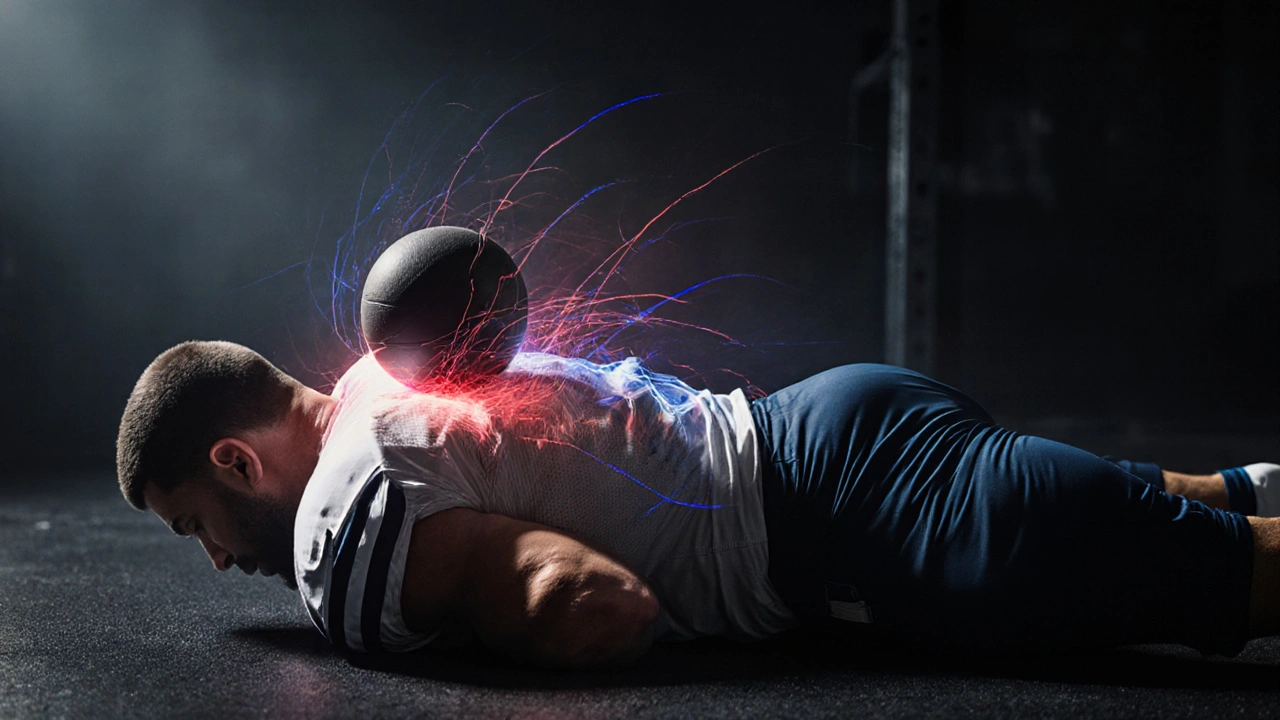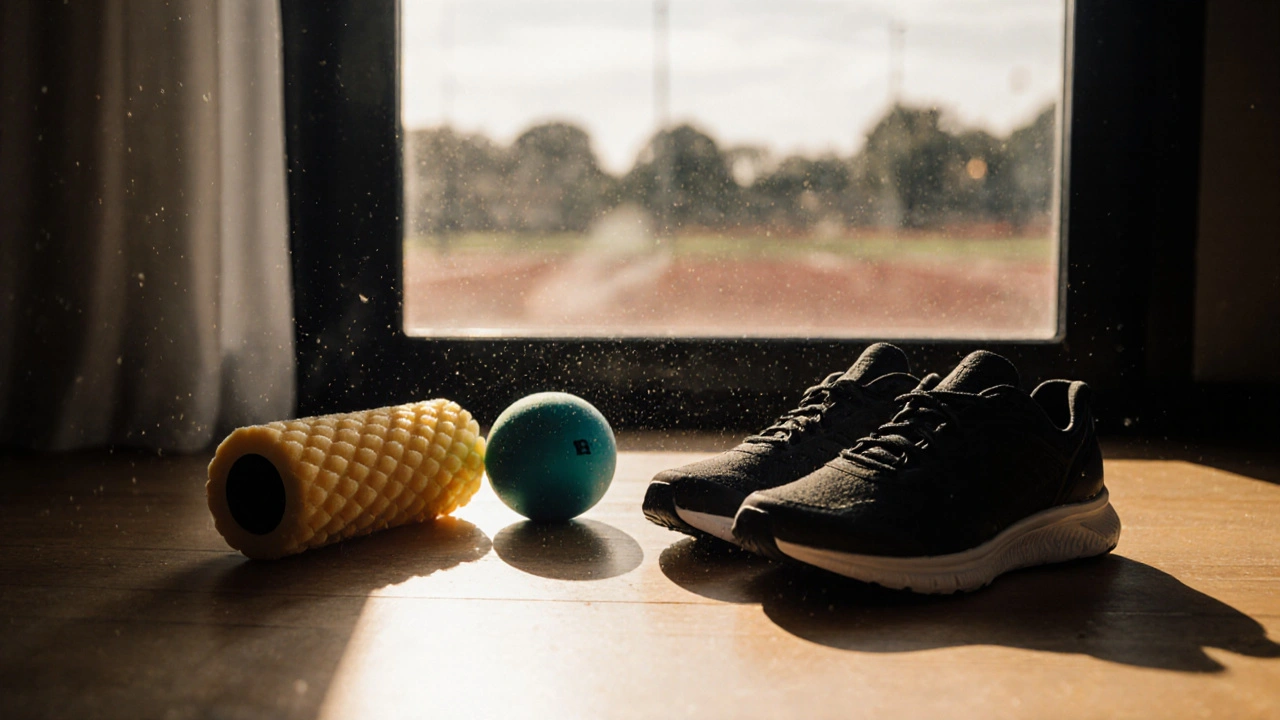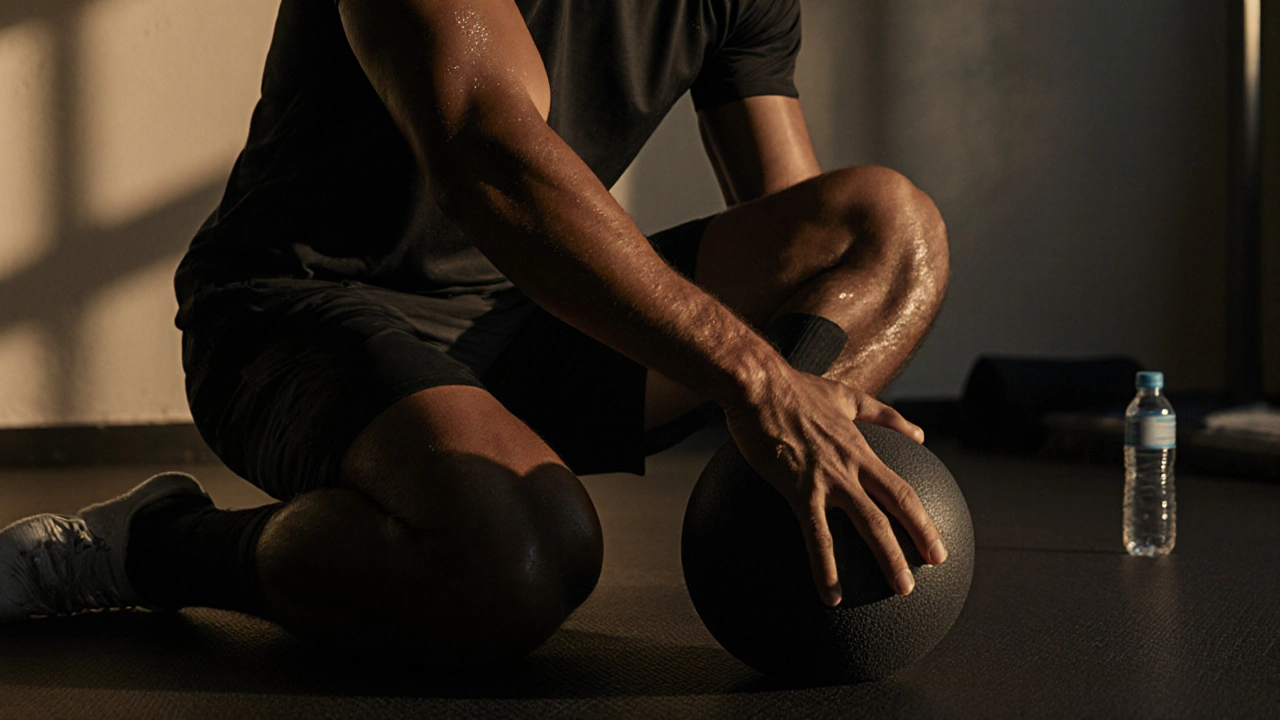Every year, more elite athletes drop traditional stretching routines and ice baths in favor of something simpler, quieter, and surprisingly effective: myofascial release therapy. You’ve probably seen it - a soccer player rolling a dense foam ball under their calf after training, a marathon runner leaning into a lacrosse ball on their upper back, or a basketball player lying still with a small rubber cylinder pressed into their hip. It doesn’t look like much. But for thousands of athletes, this isn’t just a trend - it’s a necessity.
What Myofascial Release Therapy Actually Does
Myofascial release therapy targets the fascia - a web of connective tissue that wraps around every muscle, bone, nerve, and organ in your body. Think of it like shrink-wrap that keeps everything in place. When you move, lift, run, or jump, this tissue stretches and slides. But over time, trauma, overuse, or poor posture causes it to stick, thicken, and tighten. That’s when pain, stiffness, and reduced range of motion creep in.
Unlike massage, which focuses on muscle fibers, myofascial release works on the tissue itself. It uses sustained pressure - either with hands, tools, or body weight - to gently release adhesions and restore glide. It’s not about deep tissue pain. It’s about finding the tight spot, holding steady, and letting the tissue soften. It can take 90 seconds to five minutes per spot. Patience matters.
Why Athletes Can’t Ignore It Anymore
Professional athletes train harder than ever. Training loads have increased by 30-40% over the last decade, according to data from the Australian Institute of Sport. But recovery hasn’t kept pace. Traditional methods like ice, compression, and static stretching help with inflammation and soreness, but they don’t fix the root cause: restricted fascia.
Take NFL linemen. Their bodies endure 500-700 pounds of force per play, repeated 60-80 times in a game. That kind of impact doesn’t just bruise muscles - it glues fascia together. One team in the NFL started requiring all players to do 15 minutes of self-myofascial release daily in 2023. Within six months, reported muscle tightness dropped by 47%, and hamstring strains fell by 31%.
Same story in endurance sports. Runners often blame shin splints or plantar fasciitis on overtraining. But many cases are actually caused by tight fascia in the calves or feet pulling on the shin bone or heel. A 2024 study in the Journal of Sports Rehabilitation showed that runners who added daily myofascial release to their routine improved their stride efficiency by 12% and reduced recovery time after long runs by nearly two days.
It’s Not Just for Pros
You don’t need to be a professional to benefit. Weekend warriors, gym regulars, and even people with desk jobs are seeing results. A 2025 survey of 1,200 Australian athletes - from amateur triathletes to high school track stars - found that 78% reported better mobility after just two weeks of consistent myofascial release. The biggest gains? Hip flexibility, shoulder range of motion, and reduced lower back stiffness.
One Melbourne-based crossfit athlete, 34, had chronic shoulder pain for three years. She tried physio, acupuncture, and even cortisone shots. Nothing stuck. Then she started rolling her lats and pecs with a foam roller every morning. Within three weeks, she could do pull-ups without pain. She didn’t get stronger. She just freed up tissue that had been holding her back.

How It Compares to Other Recovery Methods
| Method | Targets | Time per session | Frequency Needed | Long-Term Mobility Gains |
|---|---|---|---|---|
| Myofascial Release | Fascia, connective tissue | 10-20 minutes | Daily | High |
| Static Stretching | Muscle fibers | 15-30 minutes | Daily | Moderate |
| Ice Baths | Inflammation, soreness | 10-15 minutes | Post-workout | Low |
| Massage Therapy | Muscles, circulation | 30-60 minutes | Weekly | Moderate |
| Compression Garments | Blood flow, swelling | Worn for hours | Post-exercise | Low |
Myofascial release stands out because it’s the only method that directly addresses tissue restriction - the hidden cause of many movement problems. Ice reduces swelling but doesn’t fix stiffness. Stretching lengthens muscles but ignores the glue holding them down. Massage helps but is expensive and time-consuming. Self-myofascial release? You can do it at home, for free, with tools that cost less than $20.
Tools You Actually Need
You don’t need a fancy setup. Start with three basic tools:
- Foam roller - best for large areas like quads, hamstrings, back, and calves. Choose a medium-density roller if you’re new.
- Lacrosse or tennis ball - perfect for small, stubborn spots like feet, hips, shoulders, and spine. The harder the ball, the deeper the pressure.
- Massage stick or peanut roller - great for spine, calves, and arms. The peanut shape (two balls connected) is ideal for rolling along the spine without putting pressure on it.
Most athletes use these tools right after training or before bed. No need to wait for soreness. Prevention beats correction every time.
Where People Go Wrong
Myofascial release isn’t magic. And it’s not a quick fix. Here’s what most people mess up:
- Rolling too fast - You’re not massaging, you’re scanning. Move slowly. Pause on tender spots until the pain drops by 50%.
- Only doing it when it hurts - The best time to release fascia is before it gets tight. Do it daily, even on rest days.
- Ignoring breathing - Holding your breath locks tension in. Breathe deep and slow while you roll. It helps the tissue relax faster.
- Expecting instant results - It takes 2-4 weeks of consistent practice to notice real changes. Don’t quit after three days.
And one more thing: don’t roll directly over bones, joints, or the lower spine. That’s not helpful - it’s risky.

What Science Says
A 2023 meta-analysis of 21 studies on myofascial release in athletes found consistent improvements in:
- Range of motion (average increase: 18-22%)
- Muscle recovery speed (reduced DOMS by 35%)
- Force production (up to 11% improvement in power output)
- Perceived pain levels (down by 40% after four weeks)
Researchers believe the effects come from both mechanical changes (breaking up adhesions) and neurological ones (calming the nervous system’s pain signals). It’s not just physical - it’s also neurological.
How to Get Started
Here’s a simple 10-minute routine for athletes:
- Calves - Sit with a foam roller under your calves. Cross one leg over the other. Roll from ankle to knee. Pause on tight spots for 30 seconds. (2 minutes)
- Quads - Lie face down with the roller under your thighs. Use your elbows to roll from hip to knee. (2 minutes)
- Hips - Sit on a lacrosse ball. Lean into your glutes, roll slowly until you find a tender spot. Hold for 45 seconds. Switch sides. (2 minutes)
- Upper Back - Lie with the foam roller under your shoulder blades. Hands behind head. Gently roll up and down. Avoid the neck. (2 minutes)
- Feet - Stand barefoot and roll a tennis ball under each foot for 1 minute. (2 minutes)
Do this every day, even on rest days. After two weeks, you’ll notice your movements feel freer. Your body will thank you.
Final Thought
Athletes aren’t turning to myofascial release because it’s trendy. They’re doing it because it works - and because everything else isn’t cutting it anymore. Recovery isn’t about suffering more. It’s about moving better. And sometimes, the secret isn’t more training. It’s just letting your body breathe again.
Is myofascial release therapy the same as foam rolling?
Foam rolling is one form of myofascial release, but not all myofascial release is foam rolling. Myofascial release includes any technique that applies sustained pressure to release fascial restrictions - that includes using lacrosse balls, massage sticks, or even a therapist’s hands. Foam rolling is just the most common self-administered version.
Can I do myofascial release if I have an injury?
It depends. If you have a recent acute injury - like a torn muscle or sprained ligament - avoid rolling directly over the area. But you can still work on surrounding tissues to reduce tension and improve circulation. Always check with a physiotherapist first. For chronic tightness or old injuries, myofascial release is often very helpful.
How often should I do myofascial release?
Daily is ideal, especially for athletes. Even 10 minutes a day makes a difference. If you’re pressed for time, aim for at least 3-4 times a week. Consistency matters more than duration. Skipping days lets fascia tighten up again.
Does myofascial release hurt?
It should feel like a deep, uncomfortable pressure - not sharp or burning pain. You’re aiming for a 6-7 out of 10 on the pain scale. If it’s 9 or 10, you’re going too hard. The goal is to stay on the spot until the discomfort eases by half. That’s when the tissue starts to release.
Do I need a professional for myofascial release?
You don’t need one to start. Most athletes do self-myofascial release daily. But if you have persistent pain, limited mobility, or don’t know where to focus, seeing a physiotherapist trained in myofascial techniques can help you target the right areas faster. Think of it like getting coaching before you train alone.


 Health and Wellness
Health and Wellness